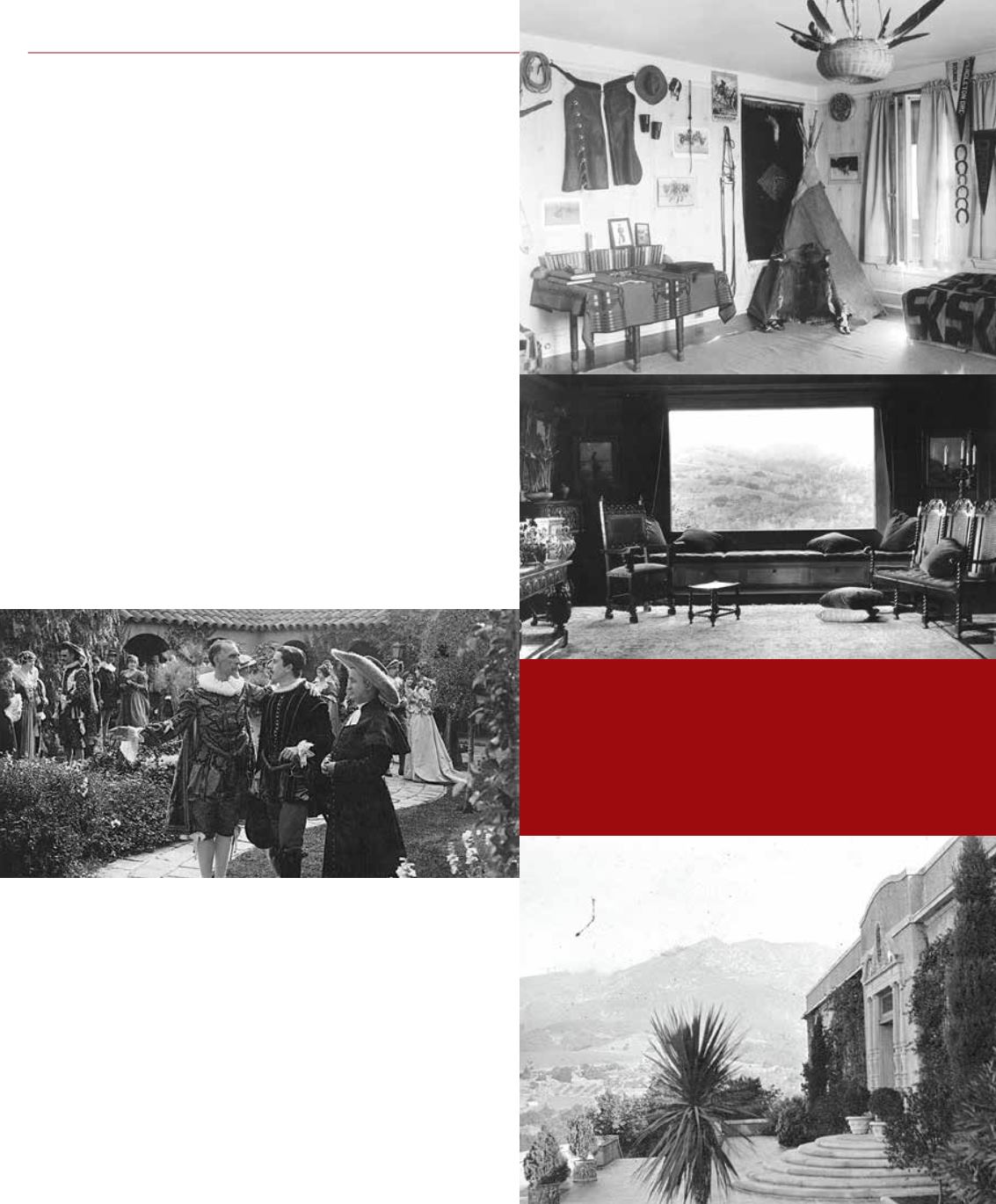
58
winter
|
spring
Company filmed
Don Quixote
in
El Cerrito
’s Spanish Courtyard.
As Black added to his acreage, he directed Roland Sauter to begin
an expansive project of retaining walls that would eventually surround
his property. To prevent erosion of the steep slopes above Mountain
Drive, Sauter hired masons to build a wall that was four feet at its base,
30 feet high and buttressed. Beginning at the old Mission reservoir,
these walls of faced rectangular sandstone blocks snaked along
Mountain Drive, Tremonto Road and Mission Ridge Road.
In 1916, anyone who was anyone seemed to be building a
mountain retreat, and Clarence soon succumbed to lodge-building fever.
The
Daily News
reported, “ Easterners who have homes here are eager to
secure land in the mountain section, ... and a number of good deals have
been concluded during the past few weeks.” Black’s lodge was to be an
art studio and weekend place to entertain friends. The mountain scenery
and magnificent views would inspire many of Mary’s canvasses.
With a place in the mountains, Clarence, along with mountain
moguls such as George Owen Knapp, took a personal interest in seeing
that San Marcos Road was kept in good repair. In 1915, Black sent
Sauter to supervise six men and six horses to repair the pass. Black
MOGULS
&
MANSIONS
visited the site each day to see that efficiency was maintained. When
the Chamber of Commerce tried to raise monies to repair Mountain
Drive, Clarence was a generous contributor.
Since Black gazed upon the Santa Barbara Mission from his lofty
roof-top office, he chose it as a special beneficiary of his philanthropy.
In 1915, he directed a stone wall to be built around the parking lot
in front of the Mission in order to protect the higher grade of the lot.
In 1916, he commissioned Roland Sauter to design and build a tile-
(top) Ruth’s bedroom at
El Cerrito
reveals her passion for all things
Western; (middle) The parlor room at
El Cerrito
offered grand
views of the mountains; (left) D.W. Griffith filmed
Don Quixote
in
the courtyard of
El Cerrito
in 1915; (bottom) The entry patio at
El
Cerrito
offered 180 degree views of the surrounding countryside


